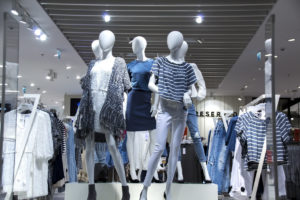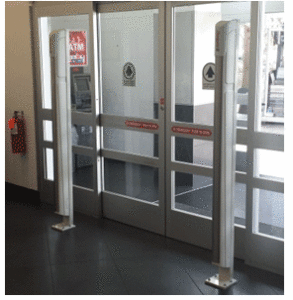 The scary shoplifting cases we hear and see on TV, or on newspapers in the United States, are becoming too commonplace to rendered us shocked.
The scary shoplifting cases we hear and see on TV, or on newspapers in the United States, are becoming too commonplace to rendered us shocked.
Shoplifting has always been a problem for stores across the globe, but now, people are losing their lives because we put more value on a bag of cookies than a human’s life. The incidents that are happening now concerning shoplifting should make us ponder whether the reactions, lives lost and the way our employees conduct themselves during a shoplifting incident merits those responses.
We should not forget that Shoplifting is a crime and that as an owner of a retail store your livelihood depends on the profits that you can gain by being a responsible owner. But, we cannot forget that we are dealing with human lives as well.
If the price of a bag of cookies has the same value to you as a shop owner than a human life, then deterrents to prevent shoplifting are probably of no interest to you. But, if you believe that prevention to these crimes is the beginning of solving a major social issue in this country, then maybe prevention methods and other solutions are likely to be of interest to you as an owner.
- Training — We have read more than once about the death of an accused shoplifter in a store. Authorities are called to the business when the shoplifting incident has gone out of hands and the resulting confrontation has led to the death of the accused shoplifter. Now, what? Lawyers, police departments and customers are involved, and the incident has become a national news piece. Providing training to your employees to respond appropriately to a shoplifting incident has proven to be an investment that you will not regret and lives that will not be lost.
- CCTV cameras, prevention systems, and facial recognition software are some of the preventable shoplifting measures you can use to prevent, deter and fight shoplifting in your stores. These are some of the investments that apart from your employees will become invaluable to you and pay for themselves in the short run.
- Inventory — If you know what you are selling, what is being stolen, and what are some of the items that are more enticing for shoplifters-because of the resale value or ease of trading — you may be able to use more of your resources to protect those aisles or move them to a safer place. Being aware of what is happening in your store is instrumental in the prevention of shoplifting.
- Employees that care what is happening in your store is an issue that is too important to ignore. Studies have shown that happy employees make great employees and can boost the morale of the people that work with them. Your responsibility as an owner begins by rewarding your employees – By increasing their salary, offering incentives, and/or offering praise-your business can gain the caring you need to protect your store.
- Hiring the right people for your store begins by using the tools at your disposal that can make a difference in your hiring. Background checks are the first step in ensuring you have the right people in place.
The rewards of paying for your employees’ training can be seen almost immediately. There is no reason why the investment should be put elsewhere when employee ’s training has been shown to be a great and continues asset for the business owner.
 Recently, I conducted an employee theft investigation for a client. I want to share some of the findings from that investigation in the hopes that you can use it to review your own potential for losses.
Recently, I conducted an employee theft investigation for a client. I want to share some of the findings from that investigation in the hopes that you can use it to review your own potential for losses.  Many small and big chain businesses across the country are fed up with the amount they lose due to shoplifting and employee theft.
Many small and big chain businesses across the country are fed up with the amount they lose due to shoplifting and employee theft.
 Hopefully, your store is one of those places where employees look forward to coming to work. You know what I’m talking about it’s that environment where everyone is happy to be there. Employees know they are there to get a job done and take pride in the service they offer to the customers. It’s the type of job where people may have an off day but their co-workers are supportive and help pick them up. It happens to all of us. These jobs have a manager who interacts with the employees and takes a real interest in each of them. The boss may take time to say hello and greet everyone. They know their employees by name and may even know their families. Unfortunately, not every workplace has such a camaraderie amongst the team members. There is any number of reasons this can happen but a major contributor to an unhappy workplace can be the hiring of an employee with a poor attitude.
Hopefully, your store is one of those places where employees look forward to coming to work. You know what I’m talking about it’s that environment where everyone is happy to be there. Employees know they are there to get a job done and take pride in the service they offer to the customers. It’s the type of job where people may have an off day but their co-workers are supportive and help pick them up. It happens to all of us. These jobs have a manager who interacts with the employees and takes a real interest in each of them. The boss may take time to say hello and greet everyone. They know their employees by name and may even know their families. Unfortunately, not every workplace has such a camaraderie amongst the team members. There is any number of reasons this can happen but a major contributor to an unhappy workplace can be the hiring of an employee with a poor attitude. C
C With darker daylight hours comes the need for more coffee, the use of lights earlier and a plan to keep crime away from your store or business. Have you considered that one of the following types of crime could affect you?
With darker daylight hours comes the need for more coffee, the use of lights earlier and a plan to keep crime away from your store or business. Have you considered that one of the following types of crime could affect you?
 Accidents can be costly to businesses. In fact, according to the
Accidents can be costly to businesses. In fact, according to the
 Big corporations across the globe worry about cybersecurity attacks and the repercussions those attacks have on the corporation’s bottom line. These cybersecurity attacks to their servers and information databases can be costly and can bring with them costly lawsuits as well. But, according to many analysts, employee theft and shoplifting are the more concerning issues affecting the retail industry. They alone account for more than two-thirds of their shrinkage and that figure seems to be rising every year. During the holiday season, those issues become more problematic and costly, and the retail industry looks for ways to prevent the great loses they will certainly suffer during this jolly time.
Big corporations across the globe worry about cybersecurity attacks and the repercussions those attacks have on the corporation’s bottom line. These cybersecurity attacks to their servers and information databases can be costly and can bring with them costly lawsuits as well. But, according to many analysts, employee theft and shoplifting are the more concerning issues affecting the retail industry. They alone account for more than two-thirds of their shrinkage and that figure seems to be rising every year. During the holiday season, those issues become more problematic and costly, and the retail industry looks for ways to prevent the great loses they will certainly suffer during this jolly time.